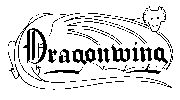

If you want to use wood, straightness counts. A pole that is more than one diameter "out of column" has lost a great deal of straightness. I generally favor alder or poplar as woods because they are not too expensive, lighter than other hardwoods, and readily available. If the pole gets a lot of stress, consider maple or oak.
If you are going the rigid-framework route, remember that there is a lot of difference between steel pipe and electrical conduit. Conduit is much softer, because it was designed to be bent, so it shouldn't be used except to define a shape (such as in a ring in a round pavilion). Remember also that a metal frame probably attracts lightning better than a wood one. The difference isn't very great, but if you insist on having the tallest tent in camp ...
In the non-professional field, anything goes. Most designs emulate those of the commercial tentmakers, but I've seen a few interesting variations.
I have seen a few frames made with PVC tubing, but they are generally too flimsy for serious tourney use. (An exception is the yurts made by Randy Yamamoto, which owe their stability to the use of lots of short pieces, diagonally braced, and lots of junctions. Assembling one of these is nothing new to those who are familiar with Tinker Toys.)
I saw one round tent with an unusually low-domed canopy, almost umbrella-like. And no wonder ... it was essentially a wood-and-canvas lawn umbrella with sidewalls. They added a valance to the eave of the umbrella to increase its resemblance to a round pavilion. (The valance was decorated with a Latin inscription which, when translated, turned out to be "Space...the final frontier...")
Because we camp so close together in the SCA, there is a real premium on tents without guy lines. Truly conical or pyramidal tents don't need them, especially if they're on the squat side. Tents with rigid structures tend to need guy lines less than those with tension structures, although their rigidity isn't much help in stronger winds. Flat walls are particularly susceptible to wind pressure, so some guying might be needed. Another approach is to use side poles mounted in "portable holes." (A portable hole is a long pole socket attached a stake of equal length or longer.) Again, these work well in times of little wind, but often require guying. The taller the pole, or the greater the ratio of stuff-above-the-ground to stuff-under-the-ground, the greater the need for guy ropes.
From time to time, you'll see tents which eliminate the center pole. This is usually done by tensioning the canopy (roof) with some sort of structure, and then sitting this structure on several side poles. I used to make tent frames of this sort, before it dawned on me that the slight extra convenience of such a design was not really worth the additional weight and complexity of the structure. (That we often use sites where we cannot drive directly up to the campsite, but must instead unload some distance away and then carry the tent pieces in, doubtless influenced this realization). If you're interested, so to the owner's manual index page,.and look at the earliest editions of the round and square manuals, where this system is described in detail.